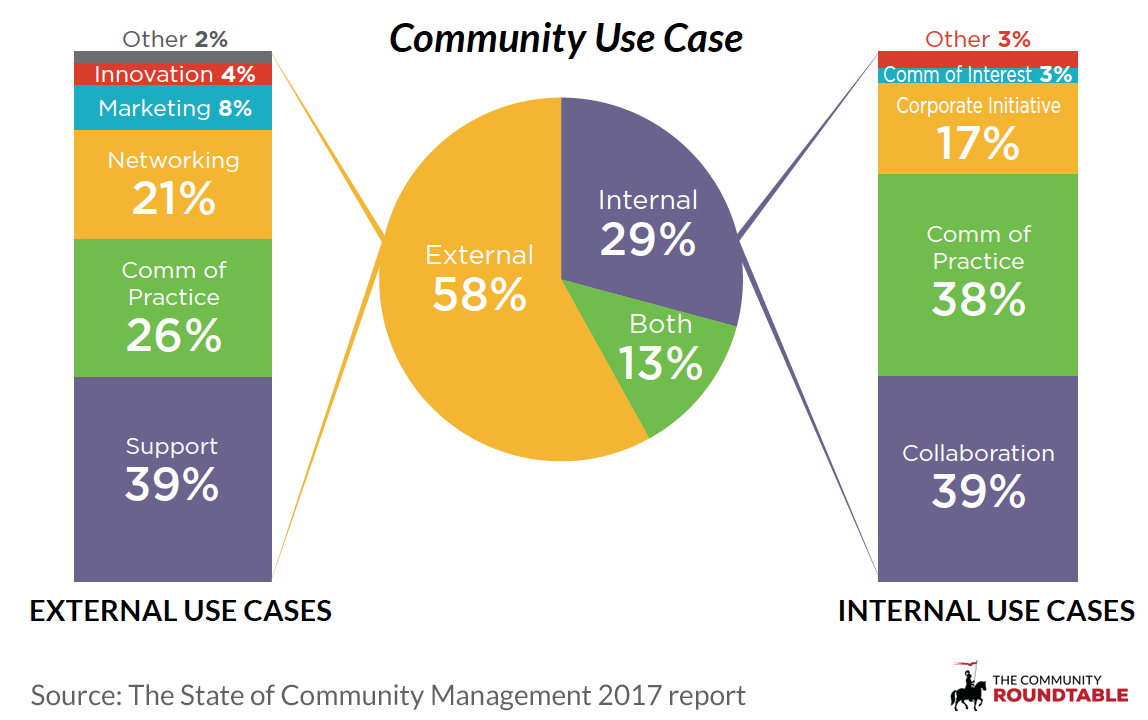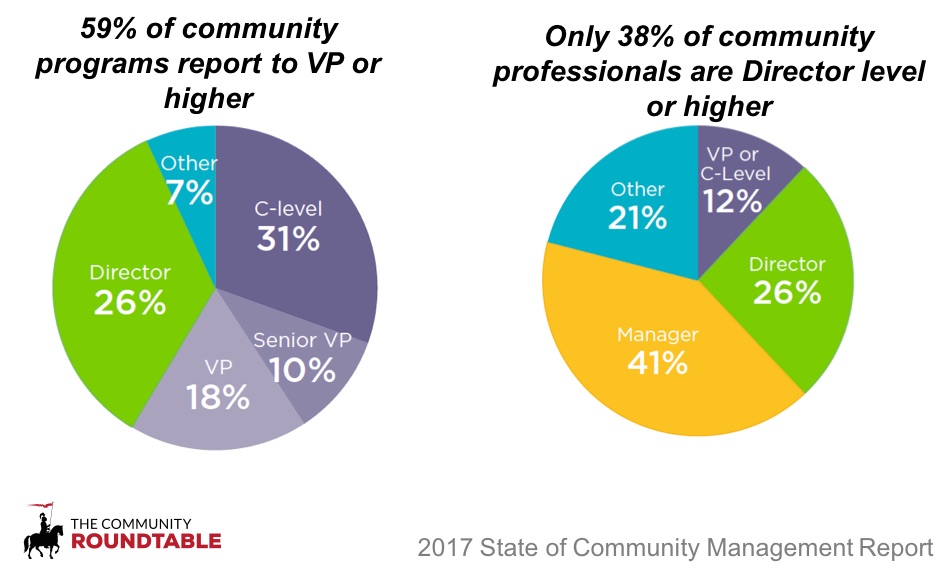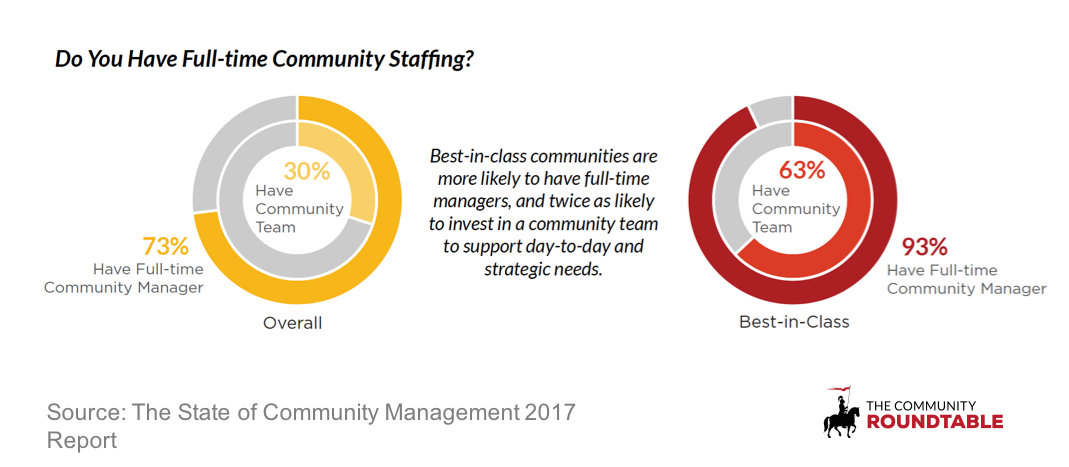Community management skills are increasingly required for all management roles. That has not resulted in a corresponding increase in community hiring.
Communities Are Now Strategic
Executives finally see communities as intriguing options for solving their organization’s hairiest issues – from streamlining the customer and employee experience to increasing market relevancy, spurring innovation, and transforming culture for a digital era.
Community approaches are now applied to more use cases across organizations, resulting in a strategic urgency to make community management a core skill of all organizational leaders and managers.
However, executives are putting their community efforts at risk because they are resistant about hiring senior community program owners and strategists.
Still Too Many Lone Community Managers, Often Reporting to Executives
In 2017, 59% of community programs report to a VP or higher and 47% of communities are reporting up to the C-suite. However, only 38% of community management professionals are Director-level or higher.
While it is exciting that communities are now seen as a mechanism to transform organizations for the digital age, it’s causing a lot of stress and anxiety for community professionals themselves. 27% of community programs still don’t even have one full-time community manager and another 43% have only one full-time community manager. This is not the kind of staffing profile that is going to transform an organization’s culture and leadership approach.
This gap between strategic ambition and community hiring is causing some predictable outcomes. Many community managers are under a lot of pressure both to satisfy the strategic interest of their executives and execute the tactical responsibilities required for successful communities. Those individuals are scrambling to grow their strategic skills without the air cover of more experienced program managers and it’s a lot to take on while still executing on tactical engagement goals.
Organizations are not moving more quickly on senior community hires because they currently don’t have the capability in-house, are not confident in their ability to hire the right person, and know that there is a strategic risk in making the wrong choice. Another reason is that because it’s now seen as a skill set needed for all leaders, it’s unclear whether hiring a handful of individuals is even the right approach.
Measuring Community Value Helps Make the Case for Hiring

The good news is that because more community programs are demonstrating that they can prove value, community budgets are growing.
In the short term, much of that budget is going to contractors and consultants that can help shape community programs and train internal resources in community management skills.
In the long term, I believe that will open up community hiring for more roles. Those hires will more often be responsible not for individual communities, but as staff for internal centers of excellence that help coach, train, and support staff across the organization. We are seeing this more in client work, where we are helping to build and support centers of excellence in community management.



